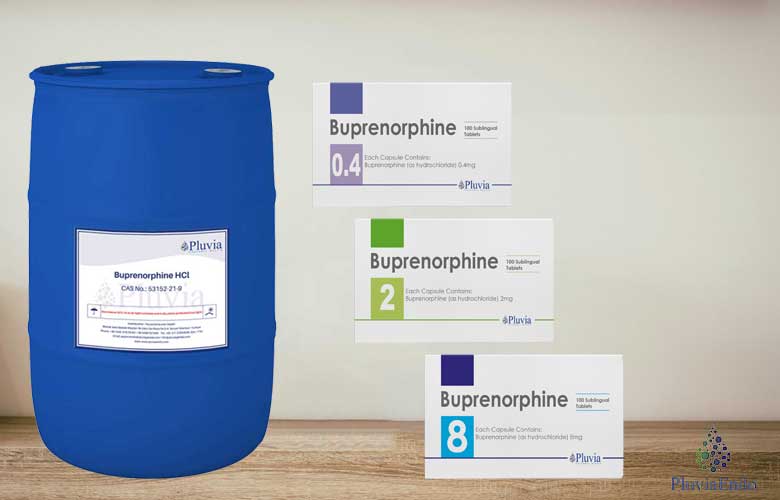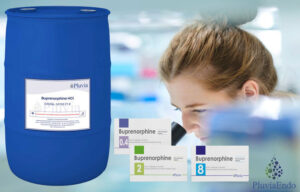Buprenorphine medication has emerged as a cornerstone in the treatment of opioid dependence. On the other hand, its ability to alleviate withdrawal symptoms and reduce cravings makes it an essential component of comprehensive addiction treatment programs. So, for pharmaceutical suppliers, forming effective partnerships with healthcare providers, regulatory bodies, and distributors is crucial to ensure the safe and efficient distribution of buprenorphine medication. This article delves into the best practices for supplier partnerships to enhance the availability, compliance, and effectiveness of buprenorphine medication.
Understanding Buprenorphine Medication
Buprenorphine is a partial opioid agonist, which means it activates opioid receptors in the brain but to a lesser degree than full agonists like heroin or methadone. This unique property helps to reduce withdrawal symptoms and cravings without producing the intense euphoria associated with other opioids. Overall, Buprenorphine’s ceiling effect reduces the risk of misuse and overdose, making it a safer option for long-term management of opioid dependence.
Buprenorphine Medication: Importance of Supplier Partnerships
Effective supplier partnerships are essential for several reasons:
- Ensuring Supply Chain Integrity: Collaboration with reliable partners helps maintain a consistent and secure supply chain, preventing shortages and ensuring that patients have continuous access to buprenorphine medication.
- Regulatory Compliance: Navigating the complex regulatory landscape requires close coordination with regulatory bodies to ensure compliance with all applicable laws and guidelines.
- Quality Assurance: Partnering with suppliers who adhere to stringent quality control standards ensures that the medication delivered to patients is safe and effective.
- Education and Training: Suppliers can support healthcare providers by offering training and educational resources on the proper use of buprenorphine medication.
Best Practices for Supplier Partnerships
1. Establish Clear Communication Channels
Effective communication is the foundation of any successful partnership. Suppliers should establish clear and open communication channels with all stakeholders, including manufacturers, distributors, healthcare providers, and regulatory agencies. Furthermore, regular meetings, updates, and feedback loops help ensure that everyone is aligned and can address any issues promptly.
2. Prioritize Regulatory Compliance
Buprenorphine is a controlled substance, and its distribution is subject to strict regulations. Furthermore, suppliers must stay informed about the latest regulatory requirements and ensure that all partners comply with these standards. This includes maintaining accurate records, conducting regular audits, and being prepared for inspections by regulatory bodies. In addition, partnering with experienced legal and compliance teams can help navigate these complexities.
3. Implement Robust Quality Control Measures
Quality assurance is critical in the pharmaceutical industry, especially for medications like buprenorphine that are used to treat vulnerable populations. So, suppliers should work with manufacturers that adhere to Good Manufacturing Practices (GMP) and conduct rigorous quality control testing. This ensures that each batch of medication meets the highest safety and efficacy standards. Additionally, implementing batch tracking and recall procedures can help manage any quality issues that arise.
Hence, at Pluvia Endo, we proudly produce a range of high-quality buprenorphine products, ensuring comprehensive treatment options for opioid dependence, including:
- Buprenorphine Hydrochloride
- Buprenorphine Base
- BUPRENORPHINE 8 mg
- Buprenorphine 2 mg
- BUPRENORPHINE 0.4 mg
4. Support Healthcare Providers with Training and Resources
Suppliers can enhance the effectiveness of buprenorphine medication treatment by providing healthcare providers with comprehensive training and resources. This includes:
- Clinical Guidelines: Up-to-date guidelines on the use of buprenorphine, including dosage recommendations, administration methods, and potential side effects.
- Patient Education Materials: Resources to help patients understand their treatment, including the importance of adherence and potential risks.
- Addiction Management Training: Training programs on addiction management, including recognizing signs of misuse and strategies for supporting recovery.
5. Buprenorphine Medication: Foster Collaborative Relationships
- Building strong, collaborative relationships with all stakeholders is essential for the success of buprenorphine treatment programs. Overall,this includes:
- Healthcare Providers: Engaging with physicians, nurses, and pharmacists to understand their needs and challenges, and providing the necessary support to address them.
- Regulatory Agencies: Maintaining open lines of communication with regulatory bodies to stay informed about changes in regulations and ensure compliance.
- Community Organizations: Partnering with community organizations that support individuals in recovery can enhance the overall effectiveness of treatment programs.
6. Utilize Technology for Efficient Supply Chain Management
Leveraging technology can streamline supply chain management and improve the efficiency of buprenorphine distribution. This includes:
- Inventory Management Systems: Implementing systems to track inventory levels, monitor demand, and prevent shortages.
- Data Analytics: Using data analytics to identify trends, predict future demand, and optimize supply chain operations.
- Prescription Monitoring Programs (PMPs): Integrating with PMPs to track buprenorphine prescriptions, prevent misuse, and ensure that medication is used appropriately.
7. Focus on Continuous Improvement
The pharmaceutical industry is constantly evolving, and suppliers must be committed to continuous improvement. This involves:
- Staying Informed: Keeping up-to-date with the latest research, industry trends, and regulatory changes.
- Soliciting Feedback: Regularly seeking feedback from partners and stakeholders to identify areas for improvement.
- Investing in Innovation: Investing in new technologies, processes, and strategies to enhance the effectiveness and efficiency of buprenorphine distribution.
Buprenorphine Medication: Conclusion
Effective supplier partnerships are essential for the successful distribution and use of buprenorphine medication. Furthermore, by establishing clear communication channels, prioritizing regulatory compliance, implementing robust quality control measures, supporting healthcare providers, fostering collaborative relationships, utilizing technology, and focusing on continuous improvement, suppliers can play a critical role in enhancing the availability and effectiveness of buprenorphine treatment.
Pharmaceutical suppliers who adopt these best practices will not only ensure the safe and efficient distribution of buprenorphine but also contribute to better outcomes for patients struggling with opioid dependence. Through strong partnerships, innovation, and a commitment to quality, we can make significant strides in addressing the opioid crisis and supporting recovery.







